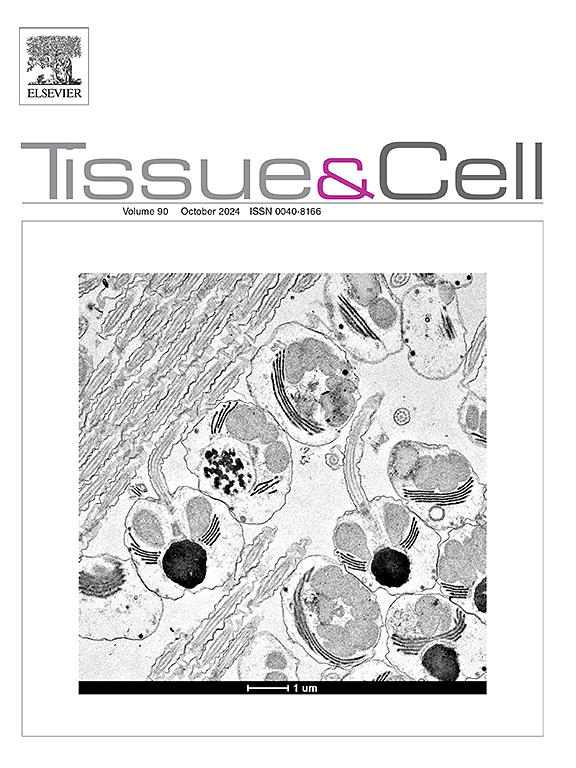PADI1 aggravates endoplasmic reticulum stress in trophoblast cells by inhibiting the FAK-ERK signaling pathway
IF 2.7
4区 生物学
Q1 ANATOMY & MORPHOLOGY
引用次数: 0
Abstract
Preeclampsia (PE) is a multisystemic syndrome of pregnancy that seriously affects maternal and infant healthcare. Here, we identified PADI1 as an abnormally highly expressed gene in PE and investigated its effect on trophoblast cells. According to the analysis results from GEO datasets GSE186257 and GSE143953, PADI1 is highly expressed in the placental samples of PE patients. PADI1 knockdown promoted the growth and migration of trophoblast cells. HTR-8 and Swan-71 cells were treated with 200 nmol/L TG to simulate ERS in vitro. PADI1 knockdown inhibited TG-induced ERS and apoptosis. Mechanistically, PADI1 knockdown downregulated ERS-related factors including IRE1α, XBP1, CHOP, ATF6 and GRP78. The FAK/ERK1/2 signaling pathway has been identified as a downstream target of PADI1 in trophoblast cells. Inhibition of FAK/ERK1/2 effectively hindered the enhancement of cell activity by PADI1 knockdown in TG-treated trophoblast cells. In conclusion, PADI1 was highly expressed in the placental tissues of PE patients. PADI1 knockdown inhibited the ERS-induced apoptosis in trophoblast cells through FAK/ERK1/2 signaling pathway, suggesting the potential role of PADI1 in PE prevention and treatment.
PADI1通过抑制FAK-ERK信号通路加重滋养细胞内质网应激
子痫前期(PE)是一种严重影响母婴保健的妊娠多系统综合征。在这里,我们发现PADI1是PE中异常高表达的基因,并研究了它对滋养细胞的影响。根据GEO数据集GSE186257和GSE143953的分析结果,PADI1在PE患者的胎盘样本中高表达。PADI1敲低可促进滋养细胞的生长和迁移。用200 nmol/L TG处理HTR-8和Swan-71细胞,模拟体外ERS。PADI1敲低可抑制tg诱导的ERS和细胞凋亡。在机制上,PADI1敲低可下调ers相关因子,包括IRE1α、XBP1、CHOP、ATF6和GRP78。FAK/ERK1/2信号通路已被确定为滋养细胞中PADI1的下游靶点。在tg处理的滋养细胞中,FAK/ERK1/2的抑制有效地阻碍了PADI1敲低对细胞活性的增强。综上所述,PADI1在PE患者胎盘组织中高表达。PADI1敲低可通过FAK/ERK1/2信号通路抑制ers诱导的滋养细胞凋亡,提示PADI1在PE防治中的潜在作用。
本文章由计算机程序翻译,如有差异,请以英文原文为准。
求助全文
约1分钟内获得全文
求助全文
来源期刊

Tissue & cell
医学-解剖学与形态学
CiteScore
3.90
自引率
0.00%
发文量
234
期刊介绍:
Tissue and Cell is devoted to original research on the organization of cells, subcellular and extracellular components at all levels, including the grouping and interrelations of cells in tissues and organs. The journal encourages submission of ultrastructural studies that provide novel insights into structure, function and physiology of cells and tissues, in health and disease. Bioengineering and stem cells studies focused on the description of morphological and/or histological data are also welcomed.
Studies investigating the effect of compounds and/or substances on structure of cells and tissues are generally outside the scope of this journal. For consideration, studies should contain a clear rationale on the use of (a) given substance(s), have a compelling morphological and structural focus and present novel incremental findings from previous literature.
 求助内容:
求助内容: 应助结果提醒方式:
应助结果提醒方式:


